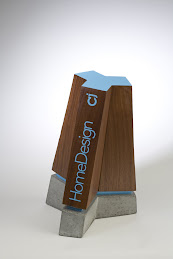Although concrete is the most used material on earth other than water, most people even many of those in the concrete industry do not understand what it is.
- Concrete is a combination of Portland Cement, water, fine aggregate (sand), and coarse aggregate (gravel).
- Portland Cement plus water forms the glue that makes concrete hard through a chemical reaction process called hydration.
This figure shows the approximate volume of each component in concrete, provided by the Portland Cement Association (PCA).
We often include other cementitous materials in our concrete to improve the chemical reaction process. Many times these supplementary cementitious materials (SCMs) are by-products of other processes such as coal, steel, and silicon production. Other SCMS may include certain clays, volcanic ashes, and even residual ash from burning certain plants.
For the purpose of concrete countertops we are concerned with a few aspects important to producing a nice looking project that will lasts a long time.
1. Fresh concrete workability - The fresh concrete must be fluid enough to allow the concrete to fully consolidate into our mold and not have any air gaps or other unwanted voids. Too much water and the concrete will be weak and the gravel may settle out. Too little water and we can't get the concrete to take the shape of the mold. We will achieve a balance using a good recipe (mixture proportions) with help from some concrete chemical admixtures such as water reducers.
2. Strength - It has to be strong enough for us the take off the forms, grind or polish, and transport to the final location. The finished countertop also has to be strong enough for normal uses (i.e. people leaning, little kids walking, big pots of food). Our strength comes from the proper amount of cement and water and the use of certain SCMs that improve the chemistry of the hardened concrete.
3. Permeability - You may not think concrete is permeable, notice a sidewalk when it rains. Afterward the surface may be dry, but the concrete is still dark from water absorbed into the surface. This infiltration of water is generally bad for concrete because it transports bad stuff into the concrete (like salt or toothpaste) and leaches out some of our good stuff (like our color). For countertop purposes we will limit the rate water soaks into our concrete so the surface doesn't look splotchy when someone sets a sweaty glass or toothbrush on the surface. This will be accomplished through our concrete recipe and by the application of a sealer.

4. Other secondary aspects
- Color - Color comes first from our cementitious materials and then from our aggregates through grinding. Typically cement is grey so concrete is grey. If we want to produce a color first the grey must be overcome. However, we can also get white cement to let us make more vibrant colors. If the concrete is ground, aggregates are exposed. If we seed the mold with bright colored stones before placing the concrete then those can be ground and exposed. Color can also be applied by acid stains after the concrete has hardened.
- Weight - Concrete is heavy right? Concrete weight is a combination of the items in the recipe. Regular concrete weighs around 150 lbs/cubic foot because the rocks are heavy. However we can make canoes out of concrete that floats because the aggregate is lightweight. We will make some concrete benches and patio furniture out of lightweight aggregate so it is easy to move around.
Next, the first project a concrete bathroom sink.






No comments:
Post a Comment